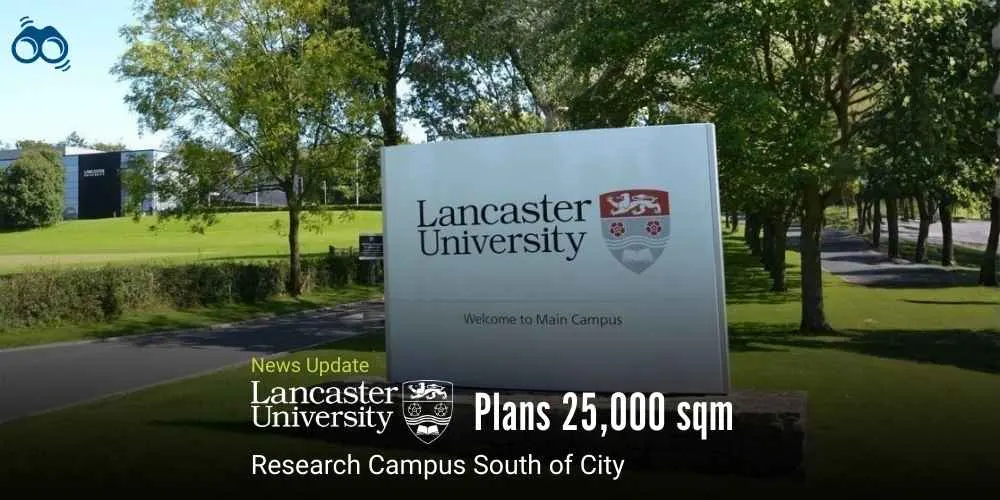University cites rising costs and fall in international admissions behind job losses
Students warned of disruption as strike action escalates on campus
Lancaster University is reported to be in the middle of a massive financial crisis as plans are to scrap more than 400 full‑time posts to save around £30 million. Their budget is severely affected not only by increasing costs but also by a collapse in international student admissions. Apparently, academic and professional services posts are under threat, and the future of teaching, research, and student support is potentially at stake. The forthcoming strike, which will last for two days, is in response to the proposed job losses. The strike is part of an ever-lengthening argument over redundancies, with staff warning that this could seriously affect academic jobs and potentially lead to the cut of all campus jobs.
Leaders informed their members from the University and College Union (UCU) that they were engaged in “working to rule and will now be escalating this to two days of strike action in November.” Jo Grady, general secretary of UCU, stated that, in a last‑ditch attempt to prevent the university from making "devastating cuts," the strike action was inevitable and requested the solidarity of other unions.
In response to these facts, Lancaster University replied that it had to make "very difficult but necessary decisions," emphasising that it was not a choice they would make easily. They argued that the financial pressures placed upon the institution made tough decisions inevitable. But they were warned by the union that if the university does not look more carefully and listen, disruptions might continue into the New Year, as some York and Lancaster staff will be standing at picket lines again.
Currently, the UK university employs 1,300 academic staff and 1,700 professional staff in full‑time equivalent figures. This thus entails a significant portion of the workforce being paid in such a way that some question the relevance of these jobs in higher education. The university‑wide student population consists of about 10,000 students from Great Britain and the EU, with an additional 3,000 coming from other countries. It is noted that the strike could have an impact on the students as well, with classes and services likely to be affected. The broader challenge becomes apparent as UK institutions debate employment and job losses while attempting to maintain high‑quality education.
Editor’s Note:
Lancaster University’s decision to shed more than 400 jobs is at the root of severe financial strife. Rising costs and a sudden fall in international admissions have left the university with a £30 million gap in its budget. This has put both academic and professional services posts at risk, leading to concerns about the future of teaching, research, and student support. The problem at Lancaster is not isolated; many highly ranked UK universities have been hard hit by reduced overseas‑student income, rising energy costs, and inflation. All this has forced many institutions’ management to look towards redundancies to make ends meet. However, ramifications include how these will affect educational quality, reduce research capacity, and dampen staff morale.
Various methods can be used to manage finances better. Universities could search for diversified income sources, which can include expanding online learning, building stronger partnerships with industry, or adding short professional courses. This is alongside opting for more efficient modes of service sharing using traditional low‑cost support. Investing in digital delivery systems and increasing overall efficiency rather than cutting jobs may also be necessary. Facing financial challenges, other universities have taken alternative steps. Some have succeeded in introducing voluntary redundancy schemes instead of compulsory redundancies. Others have examined alternative markets to attract students and offset reliance on Southeast Asia. The responsible way in those institutions has been to delay capital projects or renegotiate contracts rather than reduce staff numbers.
Skoobuzz notes that although it is a difficult situation, there are feasible alternatives that could ease the damage. Cutting jobs may seem like a quick way to reduce costs, but it compromises student experience and, in the long run, the university’s reputation. There is no quick fix. A combination of fiscal discipline, innovation, and strategic partnerships is needed to secure the future.
FAQs
1. Why are staff at Lancaster University striking?
Staff are striking in response to plans to cut more than 400 full‑time posts. The University and College Union (UCU) said the action is against compulsory redundancies that could seriously affect academic jobs and staff reductions across the campus.
2. How much money does Lancaster University aim to save through job cuts?
The university has announced that the cuts are intended to save around £30 million, citing rising costs and a fall in international student admissions as the main reasons.
3. Which jobs are at risk at Lancaster University?
Both academic and professional services posts are under threat. Lancaster University currently employs the full‑time equivalent of 1,300 academic staff and 1,700 professional staff, meaning a significant portion of the workforce could be affected.
4. When will the Lancaster University staff strike take place?
The strike is scheduled for two days, on 27 and 28 November. UCU leaders have warned that further action could follow in the New Year if the university does not reconsider its plans.
5. What has Lancaster University said about the job cuts?
The university stated that it was making “very difficult but necessary decisions” and emphasised that it had not entered into the process lightly. Management argued that financial pressures made tough choices unavoidable.
6. How will the Lancaster University strike affect students?
The university has around 10,000 students from Great Britain and the EU, plus 3,000 international students. The strike could disrupt classes and services, raising concerns about the wider student experience.
7. Are other UK universities facing similar financial issues?
Yes. Many UK universities are dealing with reduced overseas student income, rising energy costs, and inflation. These pressures have led to wider UK university labour disputes and higher education staff redundancies across the sector.














0 Comments (Please Login To Continue)